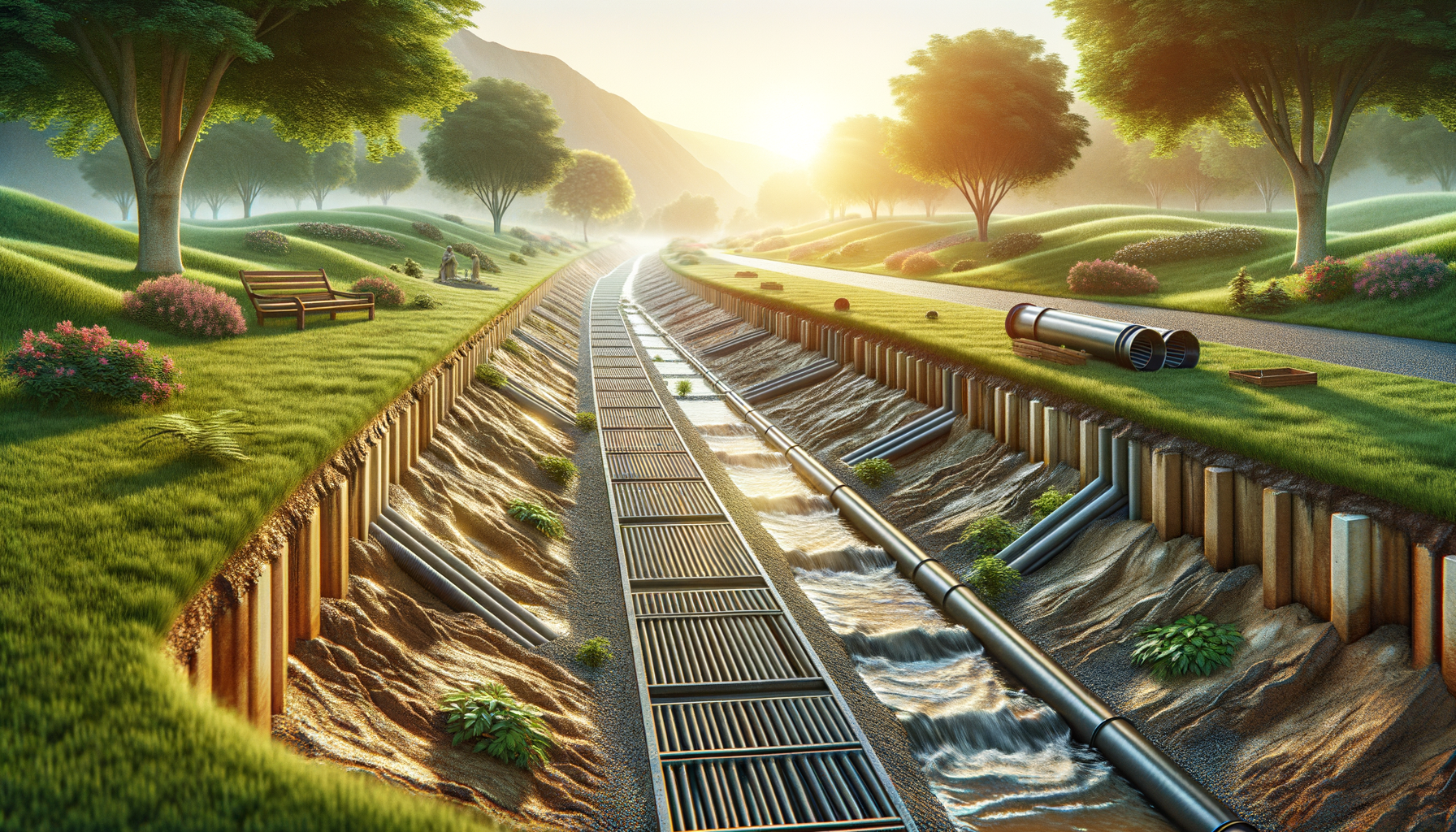Understanding Trench Drains: The Basics
Trench drains, also known as channel drains, are an effective way to manage surface water and prevent flooding. These linear drainage systems are typically installed in areas where water tends to accumulate, such as driveways, patios, and commercial spaces. They work by quickly collecting and channeling water away from these surfaces, directing it towards a designated drainage area. The design of a trench drain is relatively simple, consisting of a long, narrow channel with a grate on top. This setup allows water to flow into the channel while preventing debris from entering and clogging the system.
One of the primary benefits of trench drains is their versatility. They can be installed in various environments, from residential properties to industrial sites. Additionally, they come in different materials, such as plastic, concrete, and metal, allowing for customization based on specific needs and aesthetics. The ability to handle large volumes of water efficiently makes trench drains a popular choice for both small and large-scale water management projects.
Trench drains are not only functional but also aesthetically pleasing. With a variety of grate designs available, they can blend seamlessly into the surrounding environment. Some grates are designed to withstand heavy loads, making them suitable for areas with vehicular traffic. Others are more decorative, perfect for enhancing the visual appeal of a landscape. This balance between functionality and design makes trench drains a smart solution for modern water management challenges.
Installation Process: What to Expect
Installing a trench drain involves several key steps, each crucial to ensuring the system functions effectively. The process begins with planning and designing the layout. This step involves assessing the area to determine the best location for the drain, taking into account factors such as water flow patterns and existing infrastructure. A well-thought-out design is essential for maximizing the efficiency of the drainage system.
Once the design is finalized, the next step is excavation. This involves digging a trench that will accommodate the drainage channel. The depth and width of the trench depend on the specific requirements of the project and the type of trench drain being installed. After excavation, the channel is placed into the trench, and the surrounding area is backfilled to secure it in place.
The final step in the installation process is placing the grate on top of the channel. This step is crucial as it not only completes the system but also ensures safety and functionality. The grate prevents debris from entering the channel while allowing water to flow freely. Regular maintenance, such as cleaning the grate and removing any blockages, is necessary to keep the trench drain in optimal working condition.
Materials Matter: Choosing the Right Trench Drain
Selecting the appropriate material for a trench drain is a critical decision that impacts both performance and longevity. Common materials include plastic, concrete, and metal, each with its own set of advantages and considerations. Plastic trench drains are lightweight and easy to install, making them a popular choice for residential applications. They are resistant to corrosion and can handle moderate water flow, although they may not be suitable for areas with heavy traffic.
Concrete trench drains are known for their durability and strength. They can withstand high loads and are ideal for industrial or commercial settings. Concrete drains are also customizable, allowing for various shapes and sizes to suit specific project requirements. However, they are heavier and may require more effort during installation.
Metal trench drains, often made from stainless steel or galvanized steel, offer a combination of strength and aesthetic appeal. They are highly resistant to corrosion and can handle heavy loads, making them suitable for high-traffic areas. Metal drains are often used in environments where hygiene is a priority, such as food processing facilities, due to their ease of cleaning and maintenance. Ultimately, the choice of material depends on factors like budget, load requirements, and environmental conditions.
Maintenance Tips for Longevity
Maintaining a trench drain is essential for ensuring its longevity and efficiency. Regular maintenance helps prevent clogs and other issues that can compromise the system’s performance. One of the simplest maintenance tasks is routinely cleaning the grate to remove debris and sediment. This can be done using a broom or a hose, depending on the amount of buildup.
In addition to cleaning the grate, it’s important to inspect the channel periodically for any signs of damage or wear. Cracks or breaks in the channel can lead to leaks and reduced efficiency. If any damage is found, it’s crucial to address it promptly to prevent further deterioration. For metal trench drains, checking for signs of rust or corrosion is also important, as these can weaken the structure over time.
Another aspect of maintenance involves ensuring that the drainage system is functioning as intended. This includes checking the flow of water through the channel and making any necessary adjustments to the slope or alignment. By staying proactive with maintenance, property owners can extend the life of their trench drain and avoid costly repairs or replacements.
Applications and Benefits of Trench Drains
Trench drains offer numerous applications and benefits, making them a valuable addition to many settings. In residential areas, they are commonly used in driveways, patios, and around swimming pools to prevent water accumulation and potential damage. By efficiently channeling water away from these areas, trench drains help protect property and enhance safety.
In commercial and industrial settings, trench drains play a crucial role in managing large volumes of water. They are often installed in parking lots, loading docks, and warehouses to prevent flooding and maintain safe, dry surfaces. The ability to handle heavy loads and high traffic makes trench drains an ideal solution for these environments.
Beyond their practical benefits, trench drains also contribute to environmental sustainability. By controlling water runoff, they help reduce erosion and prevent pollutants from entering natural waterways. This makes them an eco-friendly choice for modern water management. Whether used in residential or commercial applications, trench drains provide a reliable and efficient way to manage surface water, protecting both property and the environment.








